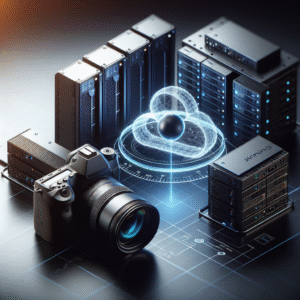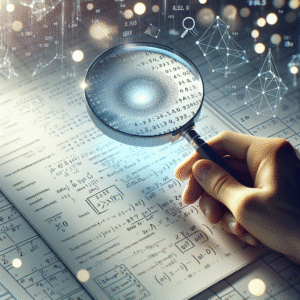Have you ever wondered how companies make sense of the massive amounts of data they collect every single day?
Understanding Big Data Analytics
Big Data Analytics is more than just a buzzword; it’s a fundamental shift in how organizations leverage data to drive decisions. For me, the essence of Big Data Analytics lies in its ability to uncover trends, patterns, and insights from vast datasets. Understanding the intricacies of this field can help me grasp how businesses make strategic decisions, enhance customer experiences, and improve operational efficiencies.
What Is Big Data?
The term “Big Data” refers to datasets that are so large or so complex that traditional data processing applications cannot adequately deal with them. When I think about big data, I envision a massive ocean of information where companies can fish for insights. This information can come from various sources, including social media, transaction records, sensor data, and more.
Characteristics of Big Data
There are several defining characteristics of Big Data, often encapsulated in the “Three Vs”: Volume, Velocity, and Variety.
-
Volume: The sheer scale of data generated is mind-boggling. I read somewhere that as of recent estimates, we are producing around 2.5 quintillion bytes of data every day. This vast amount can be challenging, but it also opens up numerous avenues for analysis.
-
Velocity: Data is being generated at unprecedented speeds. Real-time data feeds from social media platforms, online transactions, and IoT devices mean that organizations need to analyze information more rapidly than ever before.
-
Variety: The different types of data—from structured data like databases and spreadsheets to unstructured data such as text, images, and videos—represent a complex puzzle that can yield valuable insights once solved.
The Importance of Big Data Analytics
To me, the importance of Big Data Analytics cannot be overstated. It empowers organizations to make informed decisions that can lead to increased profitability, improved customer experiences, and operational efficiencies.
Some key reasons why Big Data Analytics is crucial include:
-
Informed Decision-Making: Organizations that embrace data analytics can make decisions based on facts rather than intuition. I find it fascinating how predictive analytics can forecast market trends and guide business strategies.
-
Enhanced Customer Experiences: By analyzing customer behavior and preferences, businesses can tailor their offerings, leading to higher satisfaction rates. Personally, I’ve seen how personalized recommendations make my shopping experience better.
-
Operational Efficiency: Big Data can highlight inefficiencies in processes, allowing organizations to streamline operations. I’ve learned that companies can achieve a significant reduction in costs by identifying wastage through data-driven insights.
Trends Shaping the Future of Big Data Analytics
As I look ahead, several emerging trends in Big Data Analytics catch my attention. These trends are not just shaping the landscape; they are revolutionizing how organizations interact with data.
Artificial Intelligence and Machine Learning
I am excited about the integration of Artificial Intelligence (AI) and Machine Learning (ML) in Big Data analytics. These technologies enhance the ability to handle complex datasets and automate insights extraction. For instance, algorithms can identify patterns and make predictions based on historical data, making the analysis process faster and more efficient.
Real-Time Data Processing
The demand for real-time analytics is growing rapidly. As someone who values instant results, I appreciate how organizations leverage real-time data processing to give immediate insights. This trend enables quick decision-making, which is essential in industries like finance, healthcare, and e-commerce.
Data Governance and Ethics
With the growth of data comes the responsibility to manage it ethically. Organizations are focusing more on data governance to ensure that they handle data responsibly and transparently. I recognize the importance of privacy and compliance regulations, especially in today’s world where data breaches are alarmingly common.
The Role of Data Scientists
Data scientists play a pivotal role in Big Data Analytics. For me, their work is akin to being explorers in the vast ocean of data, where they dive beneath the surface to uncover hidden treasures.
Skills Required for Data Scientists
To succeed in this field, various skills are essential:
- Statistical Analysis: I see the value in statisticians who can analyze data trends and correlations.
- Programming Knowledge: Proficiency in languages like Python and R is crucial for manipulating large datasets.
- Domain Expertise: Understanding the industry helps data scientists provide context to their findings.
Collaborating with Cross-Functional Teams
Data scientists often work alongside other teams—marketing, sales, and IT—to drive results. I feel it’s important for them to effectively communicate their findings in a way that everyone can understand. The ability to translate data insights into actionable strategies is key to driving business success.
Tools of the Trade
There’s an array of tools available for Big Data Analytics, each catering to different needs. Familiarizing myself with these tools has been enlightening, as they dramatically change how I can process data.
Data Warehousing and ETL Tools
Data warehousing solutions like Amazon Redshift or Google BigQuery allow organizations to store vast volumes of data in a centralized location. Additionally, ETL (Extract, Transform, Load) tools such as Talend and Informatica play a crucial role in preparing data for analysis. I appreciate how these tools simplify my data management routine.
Data Visualization Tools
Data visualization is an important aspect of analytics. I find that tools like Tableau and Power BI can transform complex datasets into interpretable and visually appealing dashboards. These tools help me convey insights effectively and make data-driven decisions clearer to stakeholders.
Analytical Frameworks
Various analytical frameworks help in processing data. For instance, Apache Hadoop and Apache Spark enable distributed data processing, allowing organizations to analyze massive datasets efficiently. Understanding these frameworks has helped me appreciate the scale at which modern analytics operates.
Challenges in Big Data Analytics
While the prospects of Big Data Analytics are thrilling, it’s not without its challenges. Identifying these challenges helps prepare me for navigating the landscape better.
Data Quality
One of the foremost challenges is ensuring data quality. The old adage “garbage in, garbage out” holds true. I know that without clean and accurate data, analysis can lead to misleading conclusions. Therefore, organizations must focus on data cleansing and validation to maintain integrity.
Data Security
With the increasing amounts of data, security concerns are amplified. As I reflect on recent high-profile data breaches, it becomes clear how crucial it is for organizations to implement robust cybersecurity measures.
Skill Shortage
There’s a notable shortage of skilled data professionals. I find it challenging to find even competent data analysts, let alone data scientists who can tackle the complexities of big data. The demand for specialized skills continues to outpace the supply, creating a bottleneck in analytics capabilities.
Future Prospects of Big Data Analytics
As I look into the future of Big Data Analytics, I envision a landscape that evolves and adapts with technological advancements.
Growth in Cloud Computing
The continued growth of cloud computing is likely to be a game-changer. Cloud platforms, like AWS and Azure, have made powerful computing resources accessible to organizations of all sizes. I think this democratization of data analytics allows more entities to harness the power of big data without massive investments in infrastructure.
Increased Adoption of IoT
The Internet of Things (IoT) is generating an unprecedented volume of data. The integration of IoT devices into daily life will lead to even more data sources for analysis. I find it fascinating how smart devices can continuously feed organizations valuable insights and real-time information.
Enhanced Automated Decision-Making
As AI and machine learning advance, automated decision-making will become more prominent. I believe that organizations will increasingly rely on algorithms to guide decisions, reducing human error and improving outcomes in areas like supply chain management and customer service.
Conclusion
In summary, the future of Big Data Analytics is bright and full of potential. Understanding how to navigate this ever-evolving landscape can position me, as well as organizations, for success. From the integration of AI to the ethical considerations surrounding data usage, there’s much to look forward to.
However, it’s essential to remain aware of the challenges that lie ahead and continue fostering skills in data science to ensure that we can meet the demands of this data-driven world. I’m excited to witness how Big Data Analytics will continue to shape industries and influence everyday decision-making processes.






